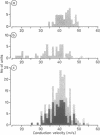Abstract
The axonal conduction velocity and the axonal refractory period were determined using electromyographic techniques for 60 single motor units in 11 patients with antecedent poliomyelitis. The results were compared with previous observations in healthy subjects as well as subjects with motor neuron disease. In antecedent poliomyelitis there was a reduced proportion of nerve fibres with low conduction velocity as compared with the findings in healthy subjects. The mean value of the axonal conduction velocities in antecedent poliomyelitis (42.4 +/- 3.7 m/s, M +/- SD) was significantly higher (p less than 0.01) while in motor neuron disease the corresponding value (35.2 +/- 7.8 m/s) was significantly lower (p less than 0.005) than in healthy subjects (39.8 +/- 4.9 m/s). In antecedent poliomyelitis the conduction velocity and refractory period were related as in healthy subjects while abnormally long refractory periods were observed in motor neuron disease.
Full text
PDF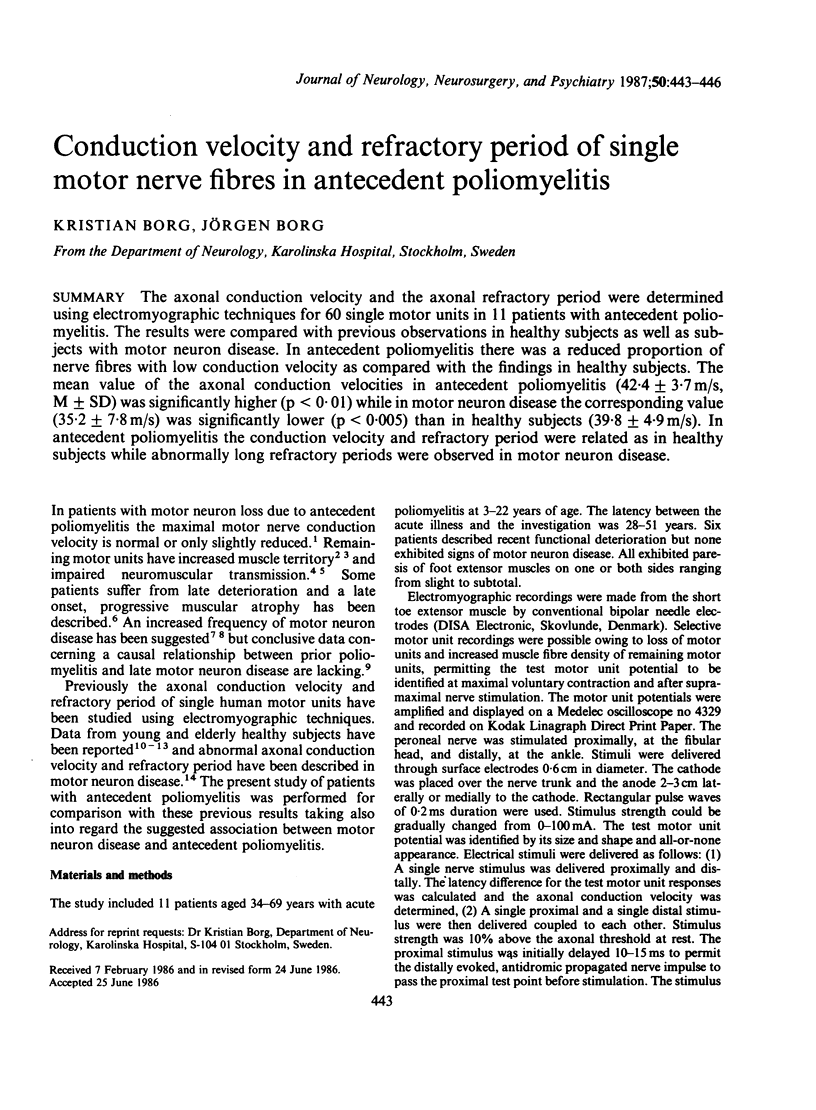
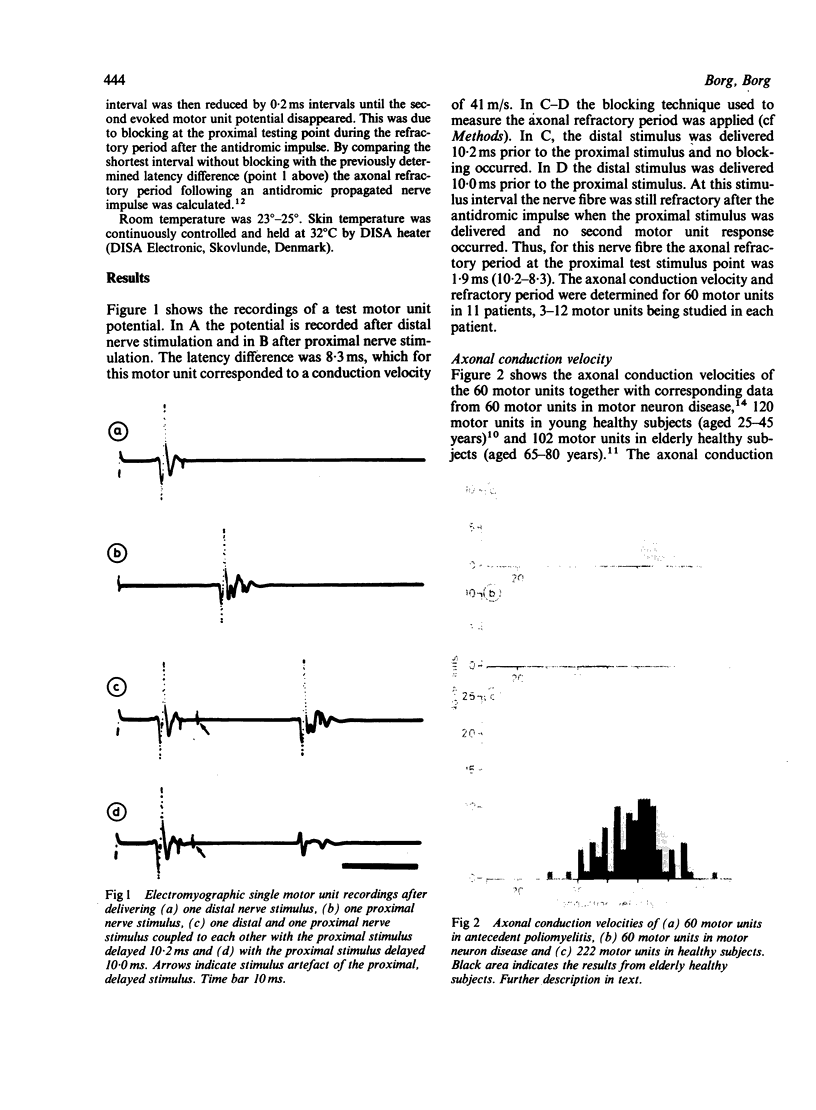
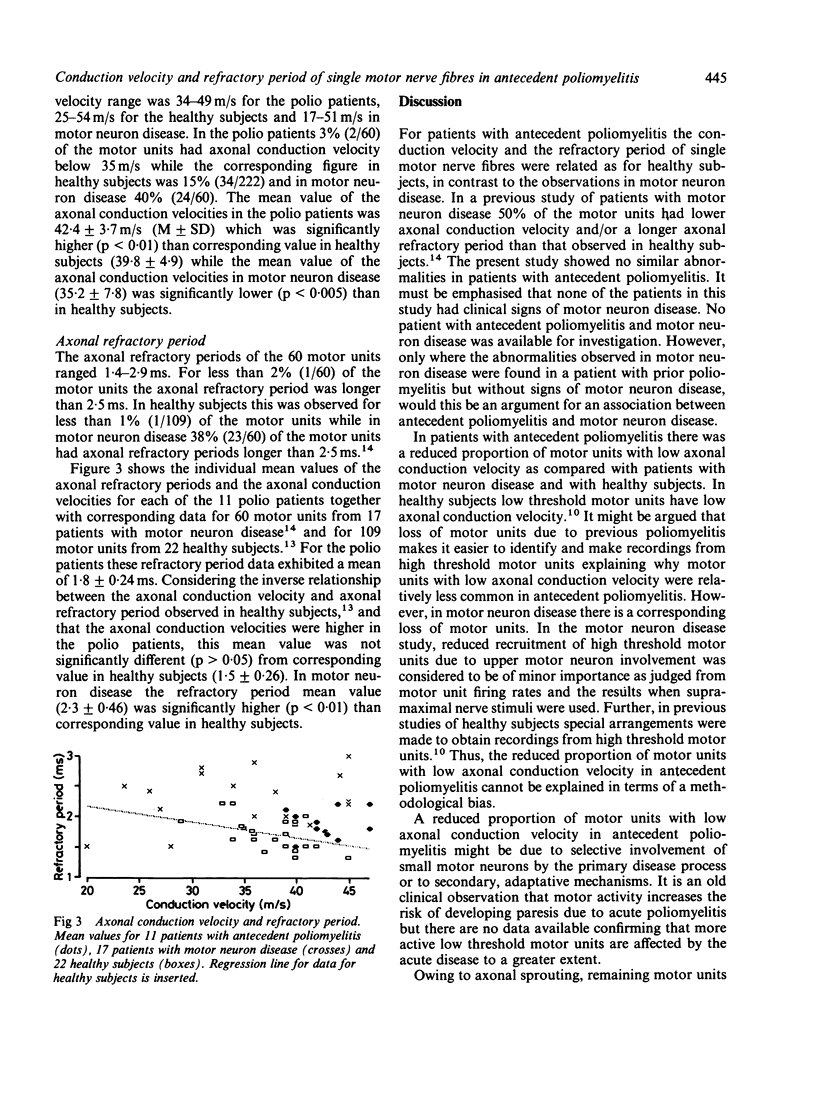
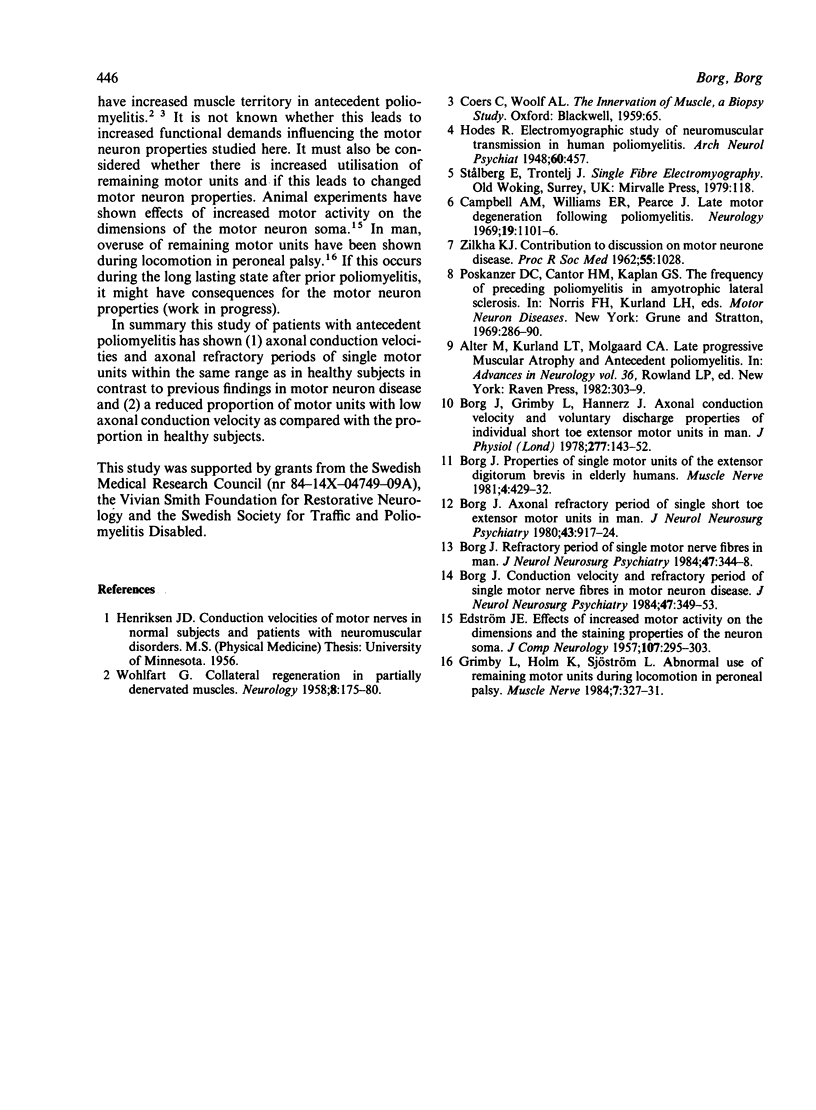
Images in this article
Selected References
These references are in PubMed. This may not be the complete list of references from this article.
- Alter M., Kurland L. T., Molgaard C. A. Late progressive muscular atrophy and antecedent poliomyelitis. Adv Neurol. 1982;36:303–309. [PubMed] [Google Scholar]
- Borg J. Axonal refractory period of single short toe extensor motor units in man. J Neurol Neurosurg Psychiatry. 1980 Oct;43(10):917–924. doi: 10.1136/jnnp.43.10.917. [DOI] [PMC free article] [PubMed] [Google Scholar]
- Borg J. Conduction velocity and refractory period of single motor nerve fibres in motor neuron disease. J Neurol Neurosurg Psychiatry. 1984 Apr;47(4):349–353. doi: 10.1136/jnnp.47.4.349. [DOI] [PMC free article] [PubMed] [Google Scholar]
- Borg J., Grimby L., Hannerz J. Axonal conduction velocity and voluntary discharge properties of individual short toe extensor motor units in man. J Physiol. 1978 Apr;277:143–152. doi: 10.1113/jphysiol.1978.sp012266. [DOI] [PMC free article] [PubMed] [Google Scholar]
- Borg J. Properties of single motor units of the extensor digitorum brevis in elderly humans. Muscle Nerve. 1981 Sep-Oct;4(5):429–434. doi: 10.1002/mus.880040513. [DOI] [PubMed] [Google Scholar]
- Borg J. Refractory period of single motor nerve fibres in man. J Neurol Neurosurg Psychiatry. 1984 Apr;47(4):344–348. doi: 10.1136/jnnp.47.4.344. [DOI] [PMC free article] [PubMed] [Google Scholar]
- Campbell A. M., Williams E. R., Pearce J. Late motor neuron degeneration following poliomyelitis. Neurology. 1969 Nov;19(11):1101–1106. doi: 10.1212/wnl.19.11.1101. [DOI] [PubMed] [Google Scholar]
- EDSTROM J. E. Effects of increased motor activity on the dimensions and the staining properties of the neuron soma. J Comp Neurol. 1957 Apr;107(2):295–304. doi: 10.1002/cne.901070207. [DOI] [PubMed] [Google Scholar]
- Grimby L., Holm K., Sjöström L. Abnormal use of remaining motor units during locomotion in peroneal palsy. Muscle Nerve. 1984 May;7(4):327–331. doi: 10.1002/mus.880070411. [DOI] [PubMed] [Google Scholar]
- WOHLFART G. Collateral regeneration in partially denervated muscles. Neurology. 1958 Mar;8(3):175–180. doi: 10.1212/wnl.8.3.175. [DOI] [PubMed] [Google Scholar]
- ZILKHA K. J. Discussion on motor neurone disease. Proc R Soc Med. 1962 Dec;55:1028–1029. [PubMed] [Google Scholar]



